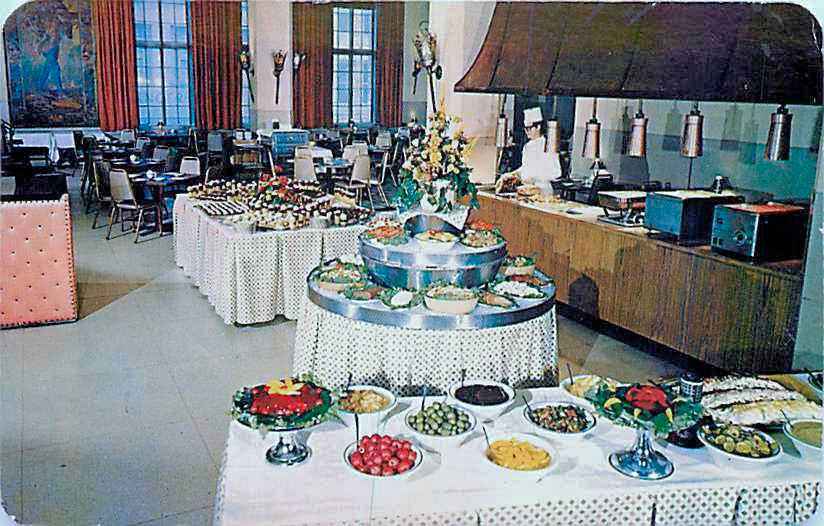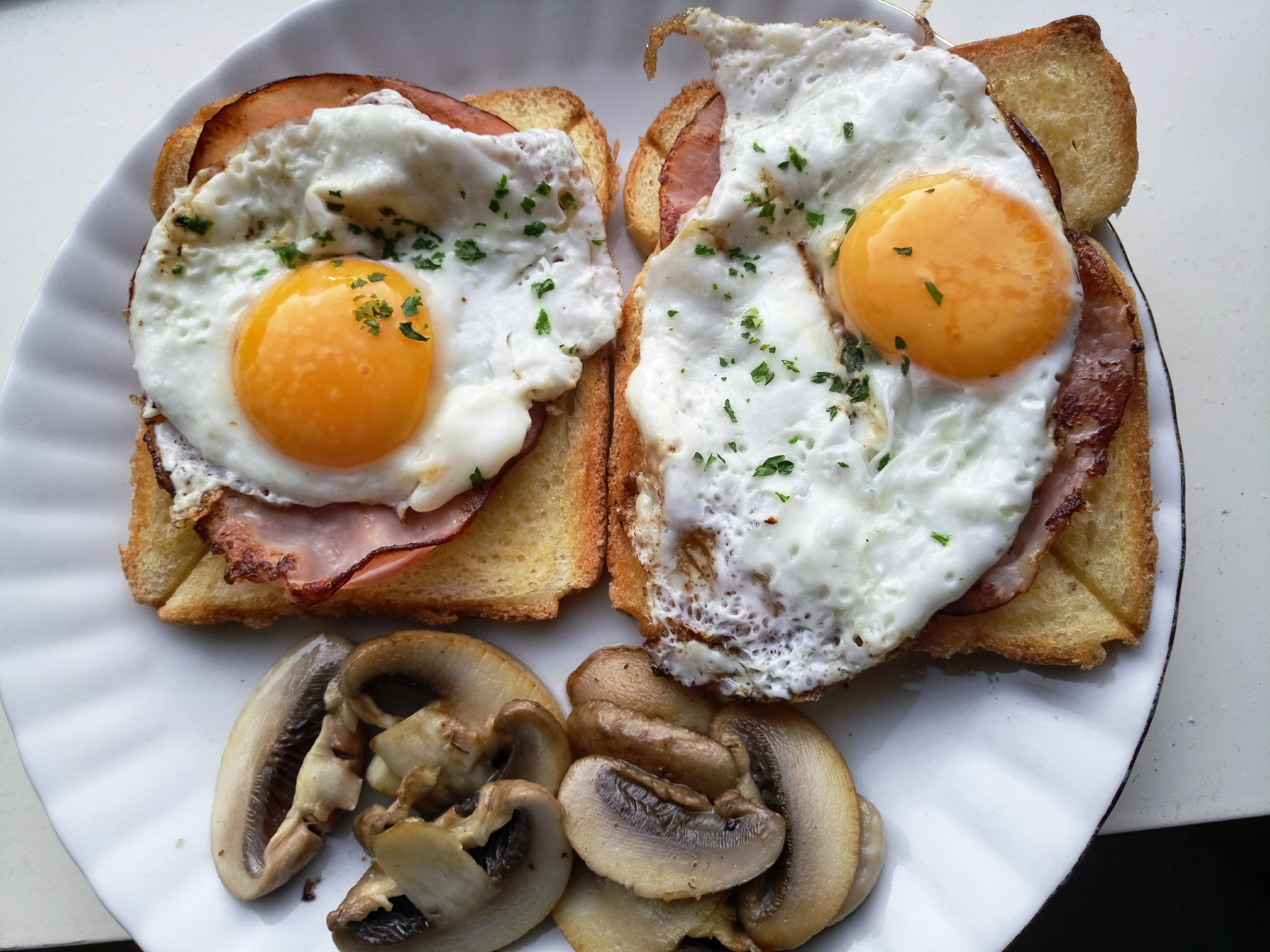|
Veka (pastry)
Veka ( pl, bułka paryska or ''bułka francuska'') is a pastry produced in Czech Republic, Slovakia and Poland. Its character is similar to French baguette although the veka is wider, bigger, and fluffier and has smoother surface. It is made of wheat flour. Its weight is about 350 grams. Polish regional names *Kraków – weka *Łódź – angielka *Upper Silesia – "lynga" or "weka" * Podkarpacie Province – bina *Poznań, Jelenia Góra – kawiorka *Kujawy – "baton" or "bułka wyborowa" *Central Poland – gryzka * Częstochowa – linga *The veka is also referred to as "bułka kielecka" and "bułka wrocławska" Uses in Czech cuisine It is commonly used creating of open sandwiches called '' obložené chlebíčky''. Eating of obložený chlebíček as a fast food snack is widespread habit and they are even sold in specialized shops called bufet or chlebíčkárna ("bread shop"). The veka can be used for certain types of ''knedlik'' (knödel Knödel (; and ) or ... [...More Info...] [...Related Items...] OR: [Wikipedia] [Google] [Baidu] |
Pastry
Pastry is baked food made with a dough of flour, water and shortening (solid fats, including butter or lard) that may be savoury or sweetened. Sweetened pastries are often described as '' bakers' confectionery''. The word "pastries" suggests many kinds of baked products made from ingredients such as flour, sugar, milk, butter, shortening, baking powder, and eggs. Small tarts and other sweet baked products are called pastries as a synecdoche. Common pastry dishes include pies, tarts, quiches, croissants, and pasties. The French word pâtisserie is also used in English (with or without the accent) for the same foods. Originally, the French word referred to anything, such as a meat pie, made in dough (''paste'', later ''pâte'') and not typically a luxurious or sweet product. This meaning still persisted in the nineteenth century, though by then the term more often referred to the sweet and often ornate confections implied today. Pastry can also refer to the pastry dough, from w ... [...More Info...] [...Related Items...] OR: [Wikipedia] [Google] [Baidu] |
Kujawy
Kuyavia ( pl, Kujawy; german: Kujawien; la, Cuiavia), also referred to as Cuyavia, is a historical region in north-central Poland, situated on the left bank of Vistula, as well as east from Noteć River and Lake Gopło. It is divided into three traditional parts: north-western (with the capital in Bydgoszcz, ethnographically regarded often as non-Kuyavian), central (the capital in Inowrocław or Kruszwica), and south-eastern (the capital in Włocławek or Brześć Kujawski). Etymology The name Kuyavia first appeared in written sources in the 1136 Bull of Gniezno ( pl, Bulla Gnieźnieńska, Latin: ''Ex commisso nobis'') issued by Pope Innocent II, and was then mentioned in many documents from medieval times. It is also mentioned in the chronicles of Wincenty Kadłubek. Geography In the north, Kuyavia borders with the historic regions of Gdańsk Pomerania (Pomerelia) and Chełmno Land, in the west with proper (exact) Greater Poland, in the south with Łęczyca Land and in the east ... [...More Info...] [...Related Items...] OR: [Wikipedia] [Google] [Baidu] |
Czech Pastries
Czech cuisine ( cs, česká kuchyně) has both influenced and been influenced by the cuisines of surrounding countries and nations. Many of the cakes and pastries that are popular in Central Europe originated within the Czech lands. Contemporary Czech cuisine is more meat-based than in previous periods; the current abundance of farmable meat has enriched its presence in regional cuisine. Traditionally, meat has been reserved for once-weekly consumption, typically on weekends. The body of Czech meals typically consists of two or more courses; the first course is traditionally soup, the second course is the main dish, and the third course can include supplementary courses, such as dessert or compote ('). In the Czech cuisine, thick soups and many kinds of sauces, both based on stewed or cooked vegetables and meats, often with cream, as well as baked meats with natural sauces ( gravies), are popular dishes usually accompanied with beer, especially Pilsner, that Czechs consume ... [...More Info...] [...Related Items...] OR: [Wikipedia] [Google] [Baidu] |
žemlovka
Žemlovka, žemľovka or Scheiterhaufen (in common language: ''zemlbába'') is a sweet bread pudding made of apples and rohlíks or veka, soaked in sweet milk. Another variant uses pears instead of apples. The meal is a traditional part of Czech and Slovak cuisine and often appears in canteens. Classic Preparation Rohlíks or veka are sliced and immersed in milk that is flavoured with sugar, vanilla sugar Vanilla sugar (German: ''Vanillezucker'', Polish: ''Cukier waniliowy'', Hungarian: ''Vaníliás cukor'', Swedish: ''Vaniljsocker'', Macedonian: ''Ванилин шеќер'') is a commonly used ingredient of Italian, Dutch, German, Polish, Swedis ..., and ground cinnamon. A layer of wet pastry is put in the bottom of a roaster; a layer of fruit is spread on top. Several layers are stacked; the top layer is always pastry. Fruit is sprinkled with sugar, ground cinnamon and/or raisins. The mixture is baked until a golden crust forms on the top. Žemlovka can be eaten both ... [...More Info...] [...Related Items...] OR: [Wikipedia] [Google] [Baidu] |
Knödel
Knödel (; and ) or Klöße (; ) are boiled dumplings commonly found in Central European and East European cuisine. Central European countries in which their variant of ''Knödel'' is popular include Austria, Germany, Hungary, Poland, Romania, Bosnia, Croatia, Serbia, Slovenia, Slovakia, Bulgaria and Czechia. They are also found in Scandinavian, Romanian, northeastern Italian cuisine, Ukrainian and Belarusian cuisines. Usually made from flour, bread or potatoes, they are often served as a side dish, but can also be a dessert such as plum dumplings, or even meat balls in soup. Many varieties and variations exist. Etymology The word is German and is cognate with the English word ''knot'' and the Latin word 'knot'. Through the Old High German and the Middle High German it finally changed to the modern expression. Knödel in Hungary are called or ; in Slovenia, or (less specifically) ; in the Czech Republic, (singular ); in Slovakia, (singular ); in Luxembourg, ; in Bos ... [...More Info...] [...Related Items...] OR: [Wikipedia] [Google] [Baidu] |
Bufet
A buffet can be either a sideboard (a flat-topped piece of furniture with cupboards and drawers, used for storing crockery, glasses, and table linen) or a system of serving meals in which food is placed in a public area where the diners serve themselves. A form of ''service à la française'', buffets are offered at various places including hotels, restaurants, and many social events. Buffet restaurants normally offer all-you-can-eat food for a set price, but some measure prices by weight or by number of dishes. Buffets usually have some hot dishes, so the term cold buffet (see Smörgåsbord) has been developed to describe formats lacking hot food. Hot or cold buffets usually involve dishware and utensils, but a finger buffet is an array of foods that are designed to be small and easily consumed only by hand, such as cupcakes, slices of pizza, foods on cocktail sticks, etc. The essential feature of the various buffet formats is that the diners can directly view the food and imm ... [...More Info...] [...Related Items...] OR: [Wikipedia] [Google] [Baidu] |
Snack
A snack is a small portion of food generally eaten between meals. Snacks come in a variety of forms including packaged snack foods and other processed foods, as well as items made from fresh ingredients at home. Traditionally, snacks are prepared from ingredients commonly available at home without a great deal of preparation. Often cold cuts, fruits, leftovers, nuts, sandwiches, and sweets are used as snacks. With the spread of convenience stores, packaged snack foods became a significant business. Snack foods are typically designed to be portable, quick, and satisfying. Processed snack foods, as one form of convenience food, are designed to be less perishable, more durable, and more portable than prepared foods. They often contain substantial amounts of sweeteners, preservatives, and appealing ingredients such as chocolate, peanuts, and specially-designed flavors (such as flavored potato chips). A snack eaten shortly before going to bed or during the night may be c ... [...More Info...] [...Related Items...] OR: [Wikipedia] [Google] [Baidu] |
Fast Food
Fast food is a type of mass-produced food designed for commercial resale, with a strong priority placed on speed of service. It is a commercial term, limited to food sold in a restaurant or store with frozen, preheated or precooked ingredients and served in packaging for take-out/take-away. Fast food was created as a commercial strategy to accommodate large numbers of busy commuters, travelers and wage workers. In 2018, the fast food industry was worth an estimated $570 billion globally. The fastest form of "fast food" consists of pre-cooked meals which reduce waiting periods to mere seconds. Other fast food outlets, primarily hamburger outlets such as McDonald's, use mass-produced, pre-prepared ingredients (bagged buns and condiments, frozen beef patties, vegetables which are prewashed, pre-sliced, or both; etc.) and cook the meat and french fries fresh, before assembling "to order". Fast food restaurants are traditionally distinguished by the drive-through. Outlets may ... [...More Info...] [...Related Items...] OR: [Wikipedia] [Google] [Baidu] |
Obložené Chlebíčky
Obložené chlebíčky ("garnished breads") are a type of open sandwich in Czech and Slovak cuisines. Various toppings and garnishes are used, and they are often served as an appetizer dish or as a snack. Overview Obložené chlebíčky consist of sliced bread that has butter or another kind of spread on it, atop which a variety of toppings may be added. Toppings used on obložené chlebíčky include various cured meats such as ham, salami and sausage, sliced hard-boiled egg, cheeses, cream cheese, cucumber, tomato, fish paste, salads and various spreads prepared with meat, vegetables or cheeses. Some vegetables such as bell pepper, pickle, tomato, radish and parsley may be used as a garnish. Veka or baguette bread may be used in their preparation. They are sometimes sold as a snack food at food stalls during festivals and in bars. Image:Chlebicky.JPG, Obložené chlebíčky prepared with a spread, ham, hard-boiled egg, red bell pepper, pickle and parsley See also * ... [...More Info...] [...Related Items...] OR: [Wikipedia] [Google] [Baidu] |
Open Sandwich
An open sandwich, also known as an open-face/open-faced sandwich, bread baser, bread platter or tartine, consists of a slice of bread or toast with one or more food items on top. History During the start of the middle ages, thin slabs of coarse bread called "trenches" (late 15th century English) or, in its French derivative, " trenchers", were used as plates. At the end of the meal, the food-soaked trencher was eaten by the diner (from which we get the expression "trencherman"), or perhaps fed to a dog or saved for beggars. Trenchers were as much the harbingers of open-face sandwichesWhat's Cooking America ''Sandwiches, History of Sandwiches''. February 2, 2007. as they were of disposable crockery. A direct precursor to the English |
Częstochowa
Częstochowa ( , ; german: Tschenstochau, Czenstochau; la, Czanstochova) is a city in southern Poland on the Warta River with 214,342 inhabitants, making it the thirteenth-largest city in Poland. It is situated in the Silesian Voivodeship (administrative division) since 1999, and was previously the capital of the Częstochowa Voivodeship (1975–1998). However, Częstochowa is historically part of the Lesser Poland region, not of Silesia, and before 1795, it belonged to the Kraków Voivodeship. Częstochowa is located in the Kraków-Częstochowa Upland. It is the largest economic, cultural and administrative hub in the northern part of the Silesian Voivodeship. The city is known for the famous Pauline monastery of Jasna Góra, which is the home of the Black Madonna painting, a shrine to the Virgin Mary. Every year, millions of pilgrims from all over the world come to Częstochowa to see it. The city also was home to the Jewish Frankist movement in the late 18th and the 19th ... [...More Info...] [...Related Items...] OR: [Wikipedia] [Google] [Baidu] |




